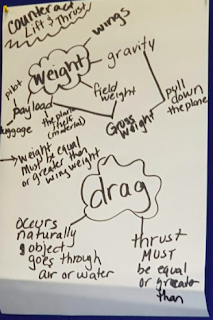Janni van Hees
Language in Abundance
Where does language occur?
-Spoken
-Print
Keep in mind, we could have mileage in one of these areas but it is important to ask yourself is it heightening the level of complexity that the children are able to achieve. We have to be prepare to shift our pedagogical beliefs in order to make the necessary shift in our student's level of achievement.
Elaborative Style Responses
- Tuning into and picking up the message and meaning expressed by the child
- Offering more-structurally, word choices, contexts
- NOT posing questions or "wringing" more out of the child
- Co-constructing and co-contributing- focused on the child and growing their language and understanding
It is important to remember to be a co-contributor by focusing and noticing. In the end, the children are in apprenticeship zone, but the teacher is the key contributor to their learning. The quality of the material and the way we role it out is very important. However, inside our classroom there is a lot of 'knowing'. We need to capitalise on what it known and it is our job as the teacher to raise the level of their understanding...the level of the 'known', As a teacher, we don't have to hurry and respond, we need to be circumspect and it is ok to say "I'm thinking....".
To and Fro Talking (Conversations): Chain Linking what you say to each other
You can't talk past each other, you need to be sure you are linking and shaping things that are connected potential paragraphs. In order for two points (made by students in a sentence form) to be chained up (to form a paragraph), they have to be related to one another.
Next Step: Introducing the chain link method of conversation building to my literacy students in the hopes of it transferring to maths and our DMIC program as well.













